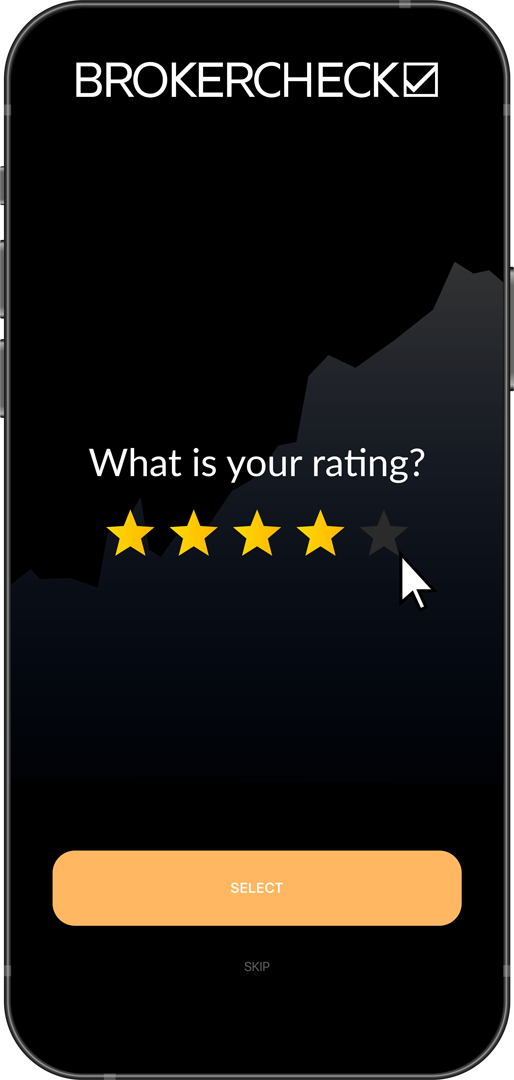1. Overview of the Momentum Indicator
The Momentum Indicator, a tool widely used in technical analysis, offers traders insights into the speed or strength of a price movement in a particular asset. This indicator is primarily used to identify potential trend reversals and gauge the strength of an asset’s price movement.

1.1. Concept and Significance
Momentum is a rate-of-change oscillator that measures the pace at which prices are changing. Unlike indicators that solely track price direction, the Momentum Indicator compares the current closing price to a previous closing price over a specified period. This approach helps traders identify whether bullish or bearish sentiments are strengthening or weakening.
1.2. Application in Financial Markets
This indicator is versatile and applicable across various financial instruments, including stocks, commodities, forex, and indices. It is particularly favored in markets known for strong trend movements. Traders and investors use the Momentum Indicator to spot overbought or oversold conditions, signaling potential entry or exit points.
1.3. Historical Context
Developed from the concept of momentum in physics, which measures the speed of a moving object, this indicator brings a similar approach to financial markets. It was one of the first technical indicators that analysts used to quantify the speed of price movements, making it a fundamental tool in the technical analyst’s toolkit.
1.4. General Use-Cases
- Trend Confirmation: Traders often use Momentum as a confirmation tool within a broader trading strategy, ensuring they trade in the direction of the underlying trend.
- Signal for Reversals: Sudden changes in the Momentum Indicator can precede trend reversals.
- Divergence: A divergence between the Momentum Indicator and price action can be a strong signal of an impending change in direction.
1.5. Advantages and Limitations
Advantages:
- Simplicity: Easy to interpret and implement in various trading strategies.
- Timeliness: Can provide early signals of trend changes.
- Versatility: Applicable across different asset classes and timeframes.
Limitations:
- False Signals: Like all indicators, it can generate false signals in volatile markets.
- Lagging Nature: As a derivative of price, it can lag behind real-time market changes.
- Requires Confirmation: Best used in conjunction with other indicators and analysis methods.
| Aspect | Details |
|---|---|
| Type | Oscillator |
| Primary Use | Identifying trend strength and potential reversals |
| Calculation Method | Comparison of current closing price to a previous closing price |
| Best Used For | Confirming trends, spotting reversals, divergence analysis |
| Markets | Stocks, Forex, Commodities, Indices |
| Advantages | Simple, timely, versatile |
| Limitations | Prone to false signals, lagging, requires confirmation |
2. Calculation Process of the Momentum Indicator
Understanding how the Momentum Indicator is calculated is crucial for traders and analysts as it provides insights into what the indicator is actually measuring and how it can be interpreted.
2.1. Formula and Components
The Momentum Indicator is calculated using the following formula:
Here, “n” represents the number of periods used in the calculation, which can be days, weeks, months, or even intraday time frames.
2.2. Steps in Calculation
- Select the Time Period (n): Decide the number of periods (n) for the calculation. Common choices include 10, 14, or 21 periods.
- Identify the Closing Prices: Determine the current closing price and the closing price from n periods ago.
- Compute the Momentum Value: Subtract the closing price from n periods ago from the current closing price.
2.3. Choosing the Right Time Period
- Shorter Timeframes (e.g., 10 periods): More sensitive to recent price changes, suitable for short-term trading.
- Longer Timeframes (e.g., 21 periods): Smoother and less volatile, suitable for longer-term trend analysis.
2.4. Interpretation of Values
- Positive Momentum: Indicates that the current price is higher than the price n periods ago, suggesting upward price momentum.
- Negative Momentum: Implies that the current price is lower than it was n periods ago, indicating downward price momentum.
2.5. Adjustments and Variations
- Some traders use a percentage rate of change by dividing the current price by the price n periods ago and then multiplying by 100.
- A moving average of the Momentum Indicator can be plotted to smooth out fluctuations and highlight underlying trends.
| Aspect | Details |
|---|---|
| Formula | Current Closing Price – Closing Price n periods ago |
| Preferred Time Periods | 10, 14, 21 periods (varies based on trading strategy) |
| Value Interpretation | Positive value indicates upward momentum, negative indicates downward |
| Adjustments | Percentage change, application of a moving average |
| Use in Analysis | Spotting immediate price movement trends, assessing market strength |
3. Optimal Values for Setup in Different Timeframes
Choosing the right settings for the Momentum Indicator is key to its effectiveness. These settings may vary depending on the trader’s strategy, the asset being traded, and market volatility.
3.1. Short-Term Trading
- Timeframe: 1-minute to 1-hour charts.
- Optimal Period Setting: Generally, a shorter period, like 5 to 10.
- Rationale: Shorter periods are more responsive to price changes, capturing quick movements essential in short-term trading.
- Example: A day trader might use a 10-period Momentum Indicator on a 15-minute chart to identify rapid price changes.
3.2. Medium-Term Trading
- Timeframe: 1-hour to 1-day charts.
- Optimal Period Setting: Moderate period settings, such as 10 to 20.
- Rationale: Provides a balance between sensitivity and smoothing, reducing the noise in medium-term price movements.
- Example: A swing trader may prefer a 14-period Momentum Indicator on a 4-hour chart for a blend of responsiveness and trend confirmation.
3.3. Long-Term Trading
- Timeframe: Daily to weekly charts.
- Optimal Period Setting: Longer periods, like 20 to 30.
- Rationale: Longer periods smooth out short-term fluctuations and better reflect the underlying trend, which is crucial for long-term investment strategies.
- Example: A position trader might use a 30-period Momentum Indicator on a daily chart to gauge the strength of longer-term trends.
3.4. Adjustments Based on Market Conditions
- High Volatility: In highly volatile markets, increasing the period may help filter out excessive noise.
- Low Volatility: In less volatile markets, a shorter period may be more effective in identifying subtle price movements.
3.5. Combining Timeframes
- Traders often use multiple timeframes to confirm signals. For instance, a trader might use a shorter timeframe to enter trades but refer to a longer timeframe for overall trend direction.

| Trading Style | Timeframe | Optimal Period | Rationale | Example Usage |
|---|---|---|---|---|
| Short-Term | 1-min to 1-hr | 5 to 10 | High responsiveness to quick movements | 10-period on 15-min chart |
| Medium-Term | 1-hr to 1-day | 10 to 20 | Balance between sensitivity and smoothing | 14-period on 4-hour chart |
| Long-Term | Daily to weekly | 20 to 30 | Reflects underlying trends, smooths noise | 30-period on daily chart |
| Adjustments | Based on market volatility | Varies | Tailored to market conditions | Longer periods in high |
4. Interpretation of the Momentum Indicator
Effective use of the Momentum Indicator involves understanding its signals and how they can indicate potential trading opportunities or warnings.
4.1. Basic Interpretation
- Above Zero Line: When the Momentum Indicator is above the zero line, it suggests bullish momentum.
- Below Zero Line: Conversely, a reading below zero indicates bearish momentum.
4.2. Identifying Overbought and Oversold Conditions
- Overbought Conditions: Extremely high values may suggest that an asset is overbought and could be due for a correction.
- Oversold Conditions: Extremely low values could indicate that an asset is oversold and might rebound.
4.3. Momentum and Price Divergence
- Bullish Divergence: Occurs when the price is making new lows, but the Momentum Indicator starts to climb. This could signal a potential upward reversal.
- Bearish Divergence: When the price is reaching new highs, but the Momentum Indicator is declining, it could indicate a potential downward reversal.
4.4. Crosses of the Zero Line
- Upward Cross: A cross from below to above the zero line can be seen as a bullish signal.
- Downward Cross: A cross from above to below the zero line is often interpreted as a bearish signal.
4.5. Using Momentum with Other Indicators
- Momentum is often used in conjunction with trend-following indicators (like moving averages) for confirmation.
- It can also be paired with volume indicators to validate the strength of price movements.
4.6. Practical Considerations
- Context is Key: Always interpret Momentum signals in the context of the overall market conditions and trends.
- Confirmation: Use other forms of analysis or indicators for confirmation to reduce the risk of false signals.
| Aspect | Interpretation |
|---|---|
| Above/Below Zero Line | Indicates bullish/bearish momentum |
| Overbought/Oversold | Suggests potential reversals in extreme readings |
| Divergence | Signals possible trend reversals |
| Zero Line Cross | Indicates potential trend changes |
| Combined Use | Best used with other indicators for confirmation |
5. Combination with Other Indicators
Combining the Momentum Indicator with other technical tools can provide a more comprehensive view of the market, leading to more informed and potentially more successful trading decisions.
5.1. Momentum and Moving Averages
- Strategy: Use moving averages to determine the trend and Momentum Indicator for timing entries and exits.
- Example: A trader might buy when the Momentum Indicator crosses above zero in an uptrend (confirmed by a moving average).
5.2. Momentum and Volume Indicators
- Strategy: Confirm Momentum signals with volume indicators like On-Balance Volume (OBV) to ensure that price movements are supported by volume.
- Example: A bullish signal from the Momentum Indicator is more reliable if accompanied by rising OBV.
5.3. Momentum and Relative Strength Index (RSI)
- Strategy: Use RSI to identify overbought or oversold conditions and Momentum Indicator to confirm the strength of the trend.
- Example: If RSI indicates oversold conditions, a subsequent upward momentum shift can signal a strong buy opportunity.
5.4. Momentum and Bollinger Bands
- Strategy: Utilize Bollinger Bands for volatility and trend analysis, while the Momentum Indicator can signal entry points.
- Example: A move outside the Bollinger Bands followed by a Momentum Indicator signal can indicate a potent trade setup.
5.5. Momentum and Fibonacci Retracement
- Strategy: Combine Fibonacci retracement levels with Momentum to identify potential reversal points in a trend.
- Example: A reversal in Momentum at a key Fibonacci level may indicate a significant price movement.
5.6. Practical Tips for Combining Indicators
- Avoid Redundancy: Ensure that the combined indicators provide complementary, not redundant, information.
- Customization: Adjust the settings of each indicator to fit the specific asset and timeframe.
- Confirmation: Use additional indicators for confirmation to reduce the likelihood of false signals.
| Combination | Strategy | Example Usage |
|---|---|---|
| Momentum + Moving Averages | Trend confirmation, timing entries/exits | Buy signal when Momentum crosses above zero in an uptrend |
| Momentum + Volume Indicators | Confirm strength of price movements with volume | Bullish Momentum + rising OBV |
| Momentum + RSI | Identify overbought/oversold conditions and confirm trend strength | Buy on Momentum uptick after RSI oversold signal |
| Momentum + Bollinger Bands | Use for volatility and trend analysis, entry points | Trade on Momentum signal following Bollinger Band breakout |
| Momentum + Fibonacci Retracement | Identify potential reversals at key levels | Momentum reversal at Fibonacci level for entry/exit |
6. Risk Management with the Momentum Indicator
Effective risk management is crucial when trading with the Momentum Indicator, as with any technical analysis tool. This section covers strategies to manage risk and protect investments.
6.1. Setting Stop-Loss Orders
- Strategy: Place stop-loss orders to limit potential losses when a trade goes against the anticipated direction.
- Example: A trader might set a stop-loss order below a recent low when buying on a Momentum Indicator signal.
6.2. Position Sizing
- Strategy: Adjust the size of the trade based on the strength of the Momentum signal and overall market volatility.
- Example: In a highly volatile market, reduce position size to manage risk.
6.3. Diversification
- Strategy: Use the Momentum Indicator across various assets and sectors to spread risk.
- Example: Applying Momentum-based strategies in different markets (stocks, forex, commodities) to diversify.
6.4. Avoiding Overtrading
- Strategy: Be selective with trades based on Momentum signals to avoid excessive risk and potential losses from overtrading.
- Example: Only take trades when Momentum signals align with other strong indicators and market conditions.
6.5. Using Trailing Stops
- Strategy: Implement trailing stop-loss orders to secure profits while allowing room for further price movement.
- Example: After a trade becomes profitable, use a trailing stop to continue protecting the position while capturing additional gains.
6.6. Combining with Fundamental Analysis
- Strategy: Supplement Momentum Indicator signals with fundamental analysis for a more holistic approach to trading.
- Example: Confirm a Momentum buy signal with positive underlying fundamental data for the asset.
| Risk Management Strategy | Description | Example Usage |
|---|---|---|
| Stop-Loss Orders | Limit potential losses on individual trades | Stop-loss below recent low on a buy signal |
| Position Sizing | Adjust trade size based on signal strength and market volatility | Smaller positions in volatile markets |
| Diversification | Apply Momentum strategies across different assets | Using Momentum in stocks, forex, and commodities |
| Avoiding Overtrading | Be selective with Momentum-based trades | Trading only when Momentum aligns with other indicators |
| Trailing Stops | Protect profits while allowing for further gains | Trailing stop on a profitable position |
| Fundamental Analysis | Combine with fundamental insights for comprehensive analysis | Momentum buy signal backed by strong fundamentals |













